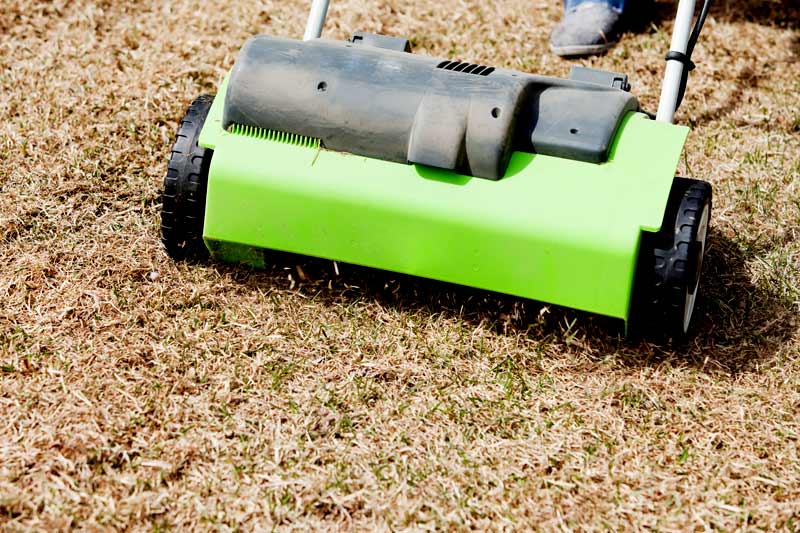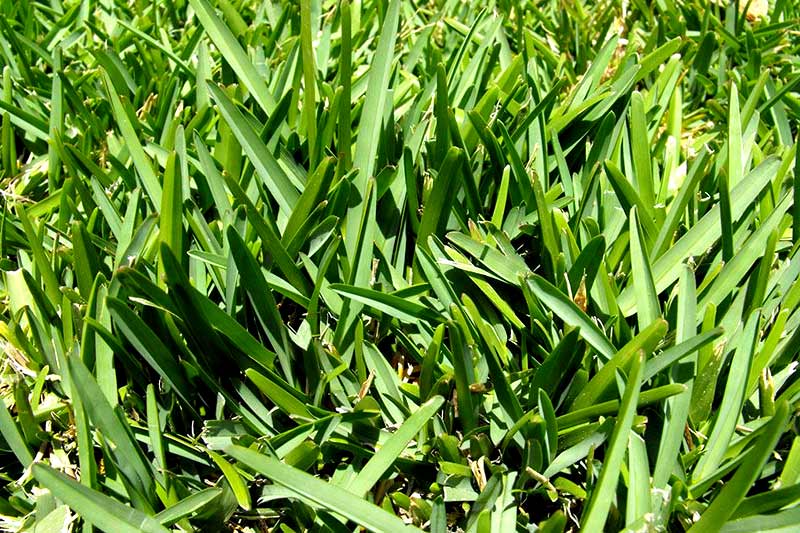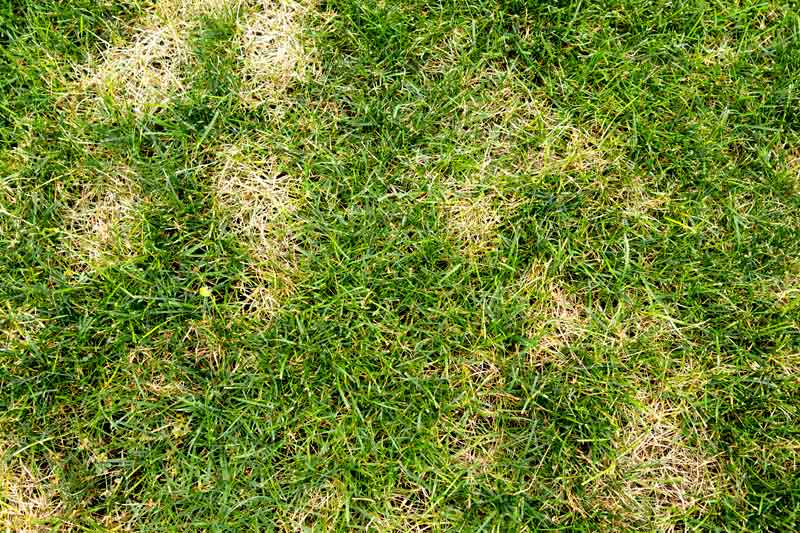Correct timing is essential for effective dethatching. If not done at the right time, it could damage the lawn, but dethatching at the optimal moment can rejuvenate a lawn that’s not doing well.
The best time of the year to dethatch warm-season grass lawns is in late spring or early summer. For cold-season grass lawns, early fall or early spring is the ideal time. These are the times when these grasses are at their peak in terms of active growth. They are also the times when they are better placed to recover from the trauma of dethatching.
Here is what you should know.

What are the best times of the year to dethatch your lawn?
The best time to dethatch a lawn is when the grass is very active. Dethatching when the grass is actively growing ensures that the grass can recover effortlessly.
Here is what you should know about the best time to dethatch your lawn.
Early fall or early spring dethatching
You should dethatch cool-season grass when it is actively growing. This tends to be either during early fall or early spring.
What are cool-season grasses?
Cool-season grasses love the cooler seasons, and so they tend to be most active from mid-spring. They also tend to be active deep into fall.
Not winter grass
However, in spite of their name, they aren’t fond of winters. This is because winter temperatures are too extreme, and so these types of grasses tend to go dormant once the temperatures drop to below 60 degrees Fahrenheit.
Activity and dormancy
As a result, while they are often active in early fall, their activity usually tapers off gradually, and then they become dormant later in fall.
They can also go dormant if they are not supplied with adequate water during summer.
Examples
Popular types of cool-season grass include:
- Tall fescue
- Creeping fescue
- Fine fescue
- Kentucky bluegrass
- Bentgrass
- Perennial ryegrass
Late spring or early summer dethatching
If your lawn has warm-season grass, then you should target your dethatching for either early summer or late spring. This is because these are the periods when these grass types are at their peak in terms of growth.
What are warm-season grasses?
Warm-season grasses are grasses that are most active during warm weather. They love long summers and as a result, they are popular in the southwest, southeast, and generally southern regions.

Activity
These types of grasses experience peak activity from late spring. Their level of activity persists right until dormancy sets in around mid-fall.
Dormancy
Their dormancy continues through winter. And during this period, they change their color to brown. This change persists right until the weather starts to warm up in spring when they spring back to life and change back to a healthy green color.
In short, they thrive in the sun. And they don’t really love being in the shade.
Examples
Popular warm-season grasses include:
- Centipede grass
- Zoysia grass
- Buffalo grass
- St. Augustine grass
What is really the absolute best season to dethatch your lawn?
If you have to choose just one season for dethatching any lawn, then spring would be the season. You essentially dethatch the cold-season grass in early spring and the warm-season grass in late spring.
What are the worst times of the year to dethatch your lawn?
The worst times of the year to dethatch your lawn are the seasons when your lawn is dormant. This is usually during seasons that have extreme weather.
Dethatching during these times of the year is bad because they don’t give the lawn a good-enough opportunity to recover.
Therefore, you shouldn’t dethatch when the weather conditions are either:
- too cold
- too hot
- too wet, or
- too dry
Generally, this usually leaves fall and spring as the most ideal seasons for dethatching grass.
How to know your lawn needs dethatching
You should dethatch your lawn when you notice any of the following signs.

Bouncy lawn
When walking on your lawn, if it feels bouncy, chances are that it has a thick thatch layer that needs to be reduced.
Poor lawn health
If your lawn is displaying general signs of poor health, there is a likelihood that a thick thatch layer is the cause. This is because overgrown thatch can suffocate roots, starve the grass of nutrients, restrict moisture access, and keep seeds from reaching the ground.
Therefore, if the grass starts turning brown, if it starts thinning, or starts developing yellow stripes, it may be time to reduce the thickness of thatch on your lawn.
Water runoff
When you water your lawn, if you notice that the water simply runs off, then you likely have a thick thatch problem. Chances are that it has grown so thick and dense that it is making it hard for water to reach the ground.
Footprints
If once you step on your lawn, you leave clear footprints that take time to disappear, you likely have a lawn that is suffering under the weight of a thick thatch layer.
Insect infestations
Thick thatch layers are excellent for providing shelter and food for insects and other pests. Therefore, if you notice an increase in insect populations on your lawn, chances are that a thick thatch layer is to blame.
Grayish-brown patches
When thatch starts rearing its head above your grass, then it is time to reduce it. And so once you notice that grayish-brown patches are ruining your lawn, you should reach for a dethatcher.
How often should you dethatch your lawn?
As a general rule, you should only dethatch your lawn once it has developed a thatch layer that is over 1/2 an inch thick. Therefore, measuring the thickness of your lawn’s thatch layer is the surest way to know whether your lawn needs dethatching or not.
But if you are looking for an easy way to know when to dethatch that doesn’t include having to measure thatch,
How often you should dethatch mainly depends on the type of grass that you plant on your lawn.
Annually
Some grass types develop thatch really fast. For these types of grasses, you will need to dethatch them every year. Good examples of grasses that develop thatch really fast include:
- Bermudagrass
- Creeping Bentgrass
- Zoysiagrass, and
- Kentucky Bluegrass
Every 2yrs to 5yrs
However, most grasses don’t develop thatch at a fast-enough rate to warrant annual dethatching. In fact, for some species like rye and tall fescue, you may need to dethatch them only once after every 5 years.
It sometimes depends on lawn care practices
It can also depend on how well you take care of your lawn.
Poor lawn care practices can encourage thatch to develop at a faster rate. As a result, you may find yourself having to dethatch your lawn way more frequently than you should.
Some of the things that can lead to accelerated thatch growth include:
- Watering. While providing your lawn with ample water is key to having a healthy lawn, overdoing it will cause problems. One of the most common ones is the rapid development of the thatch layer.
- Soil type. Clay soils are notorious for encouraging fast thatch growth. Acidic and sandy soils also fall in the same category. And so if you install your lawn on these soil types, or if due to bad lawn practices your soil ends up being acidic, then you are likely to need to dethatch your lawn way more often than normal.
- Fertilization. When you provide too much fertilizer, you encourage faster root growth. At the same time, you discourage deeper root growth as all the nutrients that the grass needs will be on the surface level. This will then accelerate the rate at which the thatch layer develops.
Use this free service to find an expert near you
If you need help dethatching your lawn, use this FREE service.
HomeGardenGuides.com offers a free service that puts you in contact with qualified professionals in your area.
Here is how it works.
- You scroll to the top of the page and enter your Zip code.
- Answer questions about your needs and preferences
- Your details will be forwarded to three local experts.
- You will then receive a price estimate – in writing – for the job and some friendly advice.
IMPORTANT: There is no obligation to hire. This is a free tool and service to be used at your pleasure.
FAQ's
Yes, dethatching is good for your lawn.
It will improve your lawn’s moisture penetration. It will increase its drainage. And it will give new grass shoots a better chance of growing and thriving. Overall, it will make your lawn healthier and more aesthetically pleasing.
However, you should keep in mind that it is only good for your lawn as long as it is so thick that it is hindering the lawn’s ability to thrive. If you dethatch it often, or if you dethatch during the wrong season, you will harm your lawn.
Yes, dethatching can hurt your lawn.
It can hurt your lawn if:
- You get the timing wrong. If you dethatch your lawn during winter, you can damage your lawn. This is because, during extreme winter conditions, the lawn won’t have time to recover from the trauma that dethatching will put it through.
- You do it frequently. Dethatching involves violently ripping out the thatch layer from the lawn. While it is beneficial in the long run, it also injures some grass blades in the process. And so doing it more than once a year is bound to cause so much damage to your lawn that it may never recover.
There is also the fact that thatch that is within 1/2 inches thick is really useful to the grass. It helps in moisture retention. It also stabilizes the temperature of the lawn. Both of these things are essential for lawn health. And so if you rip out the thatch every time the lawn builds it, you will be damaging it — both directly and indirectly.
You should mow before dethatching. In fact, it is recommended that you should mow the grass to half its normal size.
The thatch layer is located just below the grass blades. Mowing will give you better access to the thatch, something that will make your work easier. It will also reduce the degree of collateral damage that you will inflict on the grass.
Yes, you need to rake after dethatching.
Removing the torn-out thatch with a rake is essential because:
- It will make your lawn look better. Thatch is brown in color and so after dethatching, it will make your lawn look unkempt. Raking it all away and disposing of it will improve your lawn’s appearance.
- It will help to reduce the risks of pest infestation. Torn-out thatch can still serve as shelter and food for insects and other pests. Removing it will definitely help to keep your lawn pest-free.
- It will reduce the odds of persisting lawn diseases. There are times when thatch harbors lawn diseases. Dethatching sometimes helps to get rid of these diseases. But if you fail to rake and remove the thatch right after, your dethatching efforts will be of no effect.
Yes, you should seed after dethatching. This is because dethatching is often brutal on a lawn. It is bound to leave patches of bare spots on your lawn.
Seeding right after dethatching helps to fill these spots. And by doing so, it gives your lawn a better shot at a full comeback.
Therefore, if you care about the appearance of your lawn, and you want to restore its aesthetic appeal as fast as possible, then you should definitely think about seeding after dethatching.






